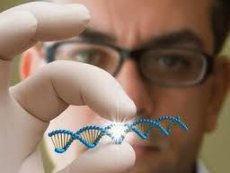New publications
Researchers have found thousands of unknown DNA sequences in the mammalian genome
Last reviewed: 30.06.2025

All iLive content is medically reviewed or fact checked to ensure as much factual accuracy as possible.
We have strict sourcing guidelines and only link to reputable media sites, academic research institutions and, whenever possible, medically peer reviewed studies. Note that the numbers in parentheses ([1], [2], etc.) are clickable links to these studies.
If you feel that any of our content is inaccurate, out-of-date, or otherwise questionable, please select it and press Ctrl + Enter.

A colossal comparative study of the genomes of 29 mammal species may lead to a revision of the principles of functioning and organization of the human genome. Scientists have managed to directly see genetic “dark matter”, the existence of which has long been suspected. Previous studies that compared human and mouse DNA indirectly concluded that there are a significant number of regulatory sequences that do not encode proteins themselves, but control the activity of other genes. But, unlike the already known and characterized regulators, their existence remained in the realm of hypotheses. That is why they were called “dark matter”: it must be somewhere, but no one has been able to see it.
A team of researchers from the Massachusetts Institute of Technology (USA) together with colleagues from other world scientific centers succeeded in this. For five years they were engaged in sequencing and comparing the genomes of 29 placental mammals, including humans, elephants, rabbits, bats, etc. For twenty of them, the genomic DNA sequence was obtained for the first time. First of all, scientists were interested in those sequences that changed little from species to species. It was the high conservatism of such regions that made them suspect regulatory sequences.
And here is the result: 10,000 highly conserved sequences were found that directly affect gene activity, and more than 1,000 that serve as the basis for the synthesis of regulatory RNAs with a complex structure. Scientists also found 2.7 million sites - potential targets for interaction with transcription factors that determine where and when a gene should work. In addition, 4,000 new coding sequences with information about proteins were found. It must be said that, although the human genome has been completely read, the functions of many DNA sequences remain unclear. When dealing with only one genome, it is almost impossible to say which site itself codes for a protein, and which performs a regulatory function. But when compared with other genomes, such a task is quite solvable.
Researchers have been able to trace the evolution of mammals over 100 million years at the molecular level. The organism's adaptation to changing environmental conditions is reflected in transformations in genome regulation, in the set and activity of that very "dark matter" (which is no longer so "dark"). For example, it is now possible to find out which genes made a man out of an ape. Previously, there were about 200 of them; some of them were responsible for brain development and limb structure. Today, the number of such sequences in DNA has increased to 1,000.
Medicine must also face new times. A large number of diseases are linked to mutations directly in the coding region of DNA: these mutations damage the structure of the proteins themselves. But even more diseases are caused by disruptions in the regulation of gene activity - when proteins begin to be synthesized where they shouldn't, or not where they should, or not in the quantities that are needed. So now, with a new, detailed and expanded map of regulatory elements in the genome, it will be possible to determine the true cause of many, many diseases.
